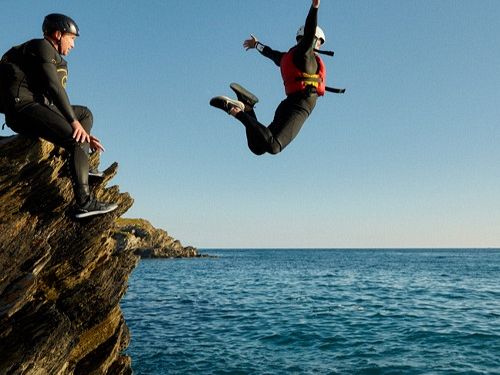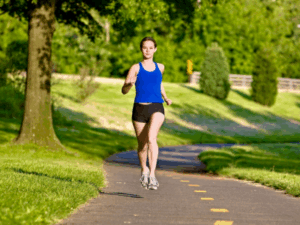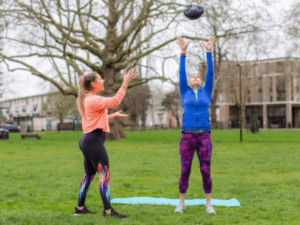Climb, swim, jump, scramble, traverse, hop, bodysurf… Having recently been coasteering in Cornwall, our founder Kate highly recommends it! So let’s answer a few questions you might have about this increasingly popular activity.
What is coasteering?
Coasteering takes place where the ocean meets the land (or, to use the correct terminology, “in the intertidal and littoral zones”) and is a great way to access parts of the coastline you don’t normally get to see. Think of it as doing an obstacle course in the water that involves swimming, rock climbing, jumping and much more.
How was it invented?
There are several theories about the birth of coasteering. Some say it was started by mountain climbers who used the coast as practice ground for their Alpine routes; others say that surfers in Wales came up with it when they scrambled around the cliffs to get to the best waves. Hundreds of thousands of people now do coasteering every year.
Do I need to be very fit and use special equipment?
You should have a good basic level of fitness and be a competent and confident swimmer. To help you stay warm and safe, you’ll need the following kit: wetsuit, helmet, buoyancy aid and lace-up trainers. If you go coasteering with an instructor, they should be able to provide all the gear you need.
What are the main challenges of coasteering?
Any activity in the sea has an element of risk so make sure you’ve checked the tide and weather conditions. The terrain will also differ from area to area so, if you’re new to coasteering, you might want to choose a coastline that’s easier to navigate (i.e. less rocky). It can also take a bit of time to get used to swimming with a buoyancy aid.
Can I do it on my own?
We recommend that you sign up for coasteering sessions with an experienced and accredited instructor to start with. They can give you safety advice and explain things like how to jump from a height and how to swim in open water. The other benefit is that they can inform you about the local history and marine life, which really adds to the experience.
Where can I find a good coasteering guide?
Check out Google Reviews, Tripadvisor and recommendations on tourism board websites to find the best outdoor activity centres near you. A good coasteering guide should be able to tailor their session to you and the other members of your group and should carry safety equipment, including throw lines and rescue tubes.
What are the health benefits of coasteering?
It gives you a full body workout – you swim a lot and you also have to use your legs to climb and your arms to pull you up on to the rocks. Being outdoors and in the water is also beneficial for your mental wellbeing. We all need a dose of vitamin sea so why not give coasteering a try?
Looking for a personal trainer who enjoys outdoor adventure as much as you? Email kate@kbpersonaltraining.co.uk












